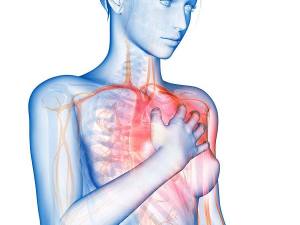Dr Rajesh Katare & Dr Regis Lamberts (Department of Physiology)
Why do females have a higher risk of diabetic heart disease?
A team of University of Otago researchers, lead by Dr Rajesh Katare, are making ground breaking discoveries into why heart disease is the number one killer of people with diabetes.
Diabetes is a chronic metabolic disease and figures from the Ministry of Health in 2013, show almost a quarter of a million New Zealanders have been diagnosed with diabetes (mostly type 2), and it is estimated another 100,000 people are unaware they have the disease. Worldwide diabetes affects more than 365 million people. Worryingly, rates are on the increase and that figure is expected to double by 2030. Unfortunately, people with diabetes are at risk of developing other health problems and recent studies show that at least 60% of people with diabetes die because of cardiovascular complications.
Although it is known that diabetes damages cardiac cells directly, reducing their ability to function and survive, ultimately leading to heart failure. The actual mechanisms that cause the extreme heart damage have long remained a mystery, until this is, Rajesh Katare’s research. Over the years, Rajesh and his team have identified harmful molecular changes in the cells of diabetic hearts that begin before the cardiovascular symptoms even appear. This pioneering work has been published in internationally renowned journals in the field, including the International Journal of Cardiology (August 2015) and Cardiovascular diabetology (April 2014).
Indian-born, Rajesh said he was inspired to undertake research in this field following the sudden death of his father in 2008, who had diabetes. ”When you start doing the research, you always want to save as many people [as you can].”
“We are using diabetes as the disease model because people with diabetes are more prone to develop heart disease. But this therapy is applicable to any form of heart disease,” Dr Katare said in a recent interview with the Heart Foundation.
The OMRF is delighted they have been involved in the innovative research of Dr Rajesh Katare by awarding an annual grant in 2012 to himself and Dr Regis Lamberts for a project titled: ‘Why do females have a higher risk of diabetic heart disease?’
Cardiac complications of diabetes are prevalent in women and the damaging affects on the heart muscle begin especially early in females. The project funded by the OMRF in 2012, used an established type-2 diabetic mouse mode to analyse the changes of cardio-protective and -destructive genes at different stages of diabetes. Not surprisingly, Rajesh and Regis discovered a gender specific progression of diabetic heart disease and in female cells there is a down-regulation of a pro-survival gene and subsequent protein. Although a mouse model is always used by Rajesh, for the initial research, he collaborates with cardiothoracic surgeons at Dunedin Hospital to collect and study heart tissue samples from diabetic coronary bypass patients, in order to confirm the laboratory based results. The findings from the OMRF funded study have provided vital information which in the future will be used to help develop gender specific treatments against diabetic heart disease.
Rajesh has also had an OMRF funded summer student, Sophie Gandhi, working with him this year (MM & JH Hughes Family Trust Scholar). Because the harmful molecular changes to the cells happen early, before symptoms appear, it’s crucial to find ways of detecting these changes, as part of her summer project, Sophie measured the levels of HDL cholesterol in blood from people with and without diabetes. Sophie discovered the levels of HDL were lower in diabetics and might therefore provide a marker for early detection of heart disease. Sophie also analysed levels of a small molecule called microRNA-34a, which is involved in regulating cardiac function. Rajesh is optimistic about the future possibility of non-invasive blood tests to determine the level of diabetic damage to the heart, by analysing levels of microRNA,-34a, which Sophie found to be raised in the diabetic patients.
”Given that the growing diabetes epidemic is set to create major global economic and social costs in coming decades, it is very exciting to have opened up a new research avenue that could greatly decrease the disease’s burden,” Rajesh said in a recent interview in the Otago Daily Times.
“Doctors and patients would benefit from doctors being able to determine levels of markers in the diabetic heart, and this could help provide early warning of heart health risks, and could help doctors refine treatment options”
